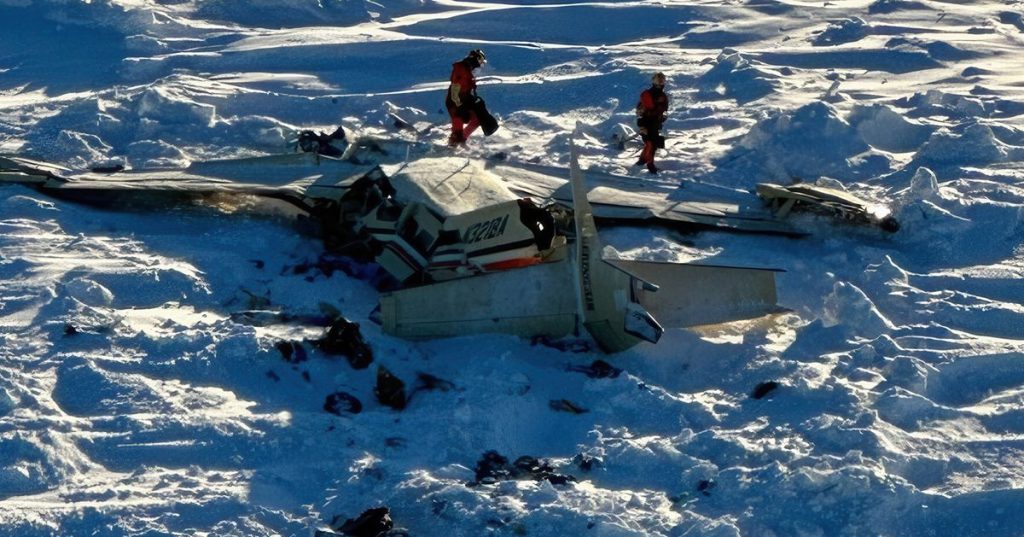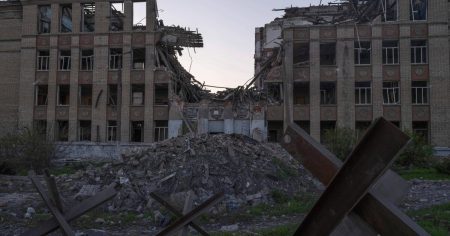Tragedy Strikes in Alaska: Plane Crash Claims 10 Lives, Community Mourns
A devastating plane crash on the Bering Sea has left Alaska in mourning after all 10 individuals on board lost their lives. The single-engine turboprop plane, operated by Bering Air, was traveling from Unalakleet to Nome when it disappeared on Thursday afternoon. The aircraft was found the following day, and recovery crews worked tirelessly to retrieve the remains of the victims before a winter storm hit the region. The Nome Volunteer Fire Department announced on Saturday via Facebook that all 10 individuals had been brought home, offering a sense of closure amid the tragedy.
The crash occurred under challenging conditions, with the plane landing on an ice floe that was drifting at approximately 5 miles per day. This movement, along with the approaching winter storm, made the recovery process extremely difficult. National Transportation Safety Board (NTSB) Chair Jennifer Homendy emphasized the commitment to determining the cause of the crash, stating that the ultimate goal is to improve aviation safety in Alaska and across the United States. Crews continued their efforts to recover the aircraft as the community grappled with the loss.
Among the victims were two individuals, Rhone Baumgartner and Kameron Hartvigson, who had traveled to Unalakleet to service a critical heat recovery system for the community’s water plant. Their deaths, along with the loss of the other eight individuals, including pilot Chad Antill of Nome, have sent shockwaves through Alaska. The victims ranged in age from 30 to 58, and their contributions to their communities will be deeply missed. David Beveridge of the Alaska Native Tribal Health Consortium expressed the profound impact of the loss, stating that it would be felt across the state.
The flight was a routine commuter trip, a common mode of transportation in Alaska due to the vast and remote landscape. However, this tragedy has underscored the risks associated with flying in such challenging conditions. The aircraft was found approximately 30 miles southeast of Nome, and radar data indicated a rapid loss of elevation and speed before the crash. However, no distress signals were received, leaving many questions unanswered. The NTSB is leading the investigation, with nine experts en route to the scene to determine the cause of the crash.
As the investigation unfolds, the community of Nome and beyond has come together to support the families of the victims and those involved in the recovery efforts. Local leaders, including Nome Mayor John Handeland and U.S. Sen. Lisa Murkowski, have expressed their grief and appreciation for the resilience of the community. Prayer vigils were held, and support systems have been put in place to help those affected by the tragedy. Bering Air, the airline operating the flight, has also reached out to offer support and resources to the families of the victims.
This tragic event is the third major aviation incident in the U.S. in just over a week, following a collision between a commercial jetliner and an Army helicopter near Washington, D.C., and a medical transport plane crash in Philadelphia. Flying is a lifeline for many in Alaska, connecting remote communities and facilitating essential services. While the crash has raised questions about aviation safety, it has also highlighted the critical role that small planes play in the state’s transportation network. As the community mourns the loss of these 10 lives, the focus remains on supporting the families, understanding the cause of the crash, and ensuring that such tragedies are prevented in the future.









